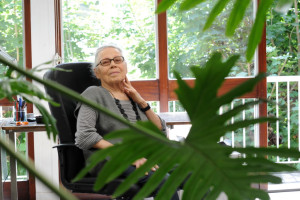Hungarian, 1924-2023
Vera Molnár is widely considered a pioneer of generative computer art. Born in Hungary, she studied aesthetics and art history at the Hungarian University of Fine Arts. In the 1940s and 1950s, she created abstract paintings. By 1959 she was making combinatorial images using an analog algorithmic process she called the “machine imaginaire” (imaginary machine). In the 1960s, she co-founded two art groups in France concerned with artistic research: the Groupe de Recherche d'Art Visuel (GRAV) which espoused minimal, non-objective image-making, and which later gave rise to the Op-Art and Kinetic Art movements, and Art et Informatique, a group more focused on art and computing. In 1968 she began using a computer to create her first computer drawings at a research lab in Paris with the aid of a plotting machine. Molnar taught herself the early programming languages Fortran and BASIC to create her images and would continue to explore the aesthetic possibilities of collaboration between humans and machines throughout more than seven decades of art-making. Her work has been widely collected by major museums. In 2007, she was named a Chevalier of Arts and Letters in France. Molnár was selected as one of 213 artists for the 59th Venice Biennale in 2022.
